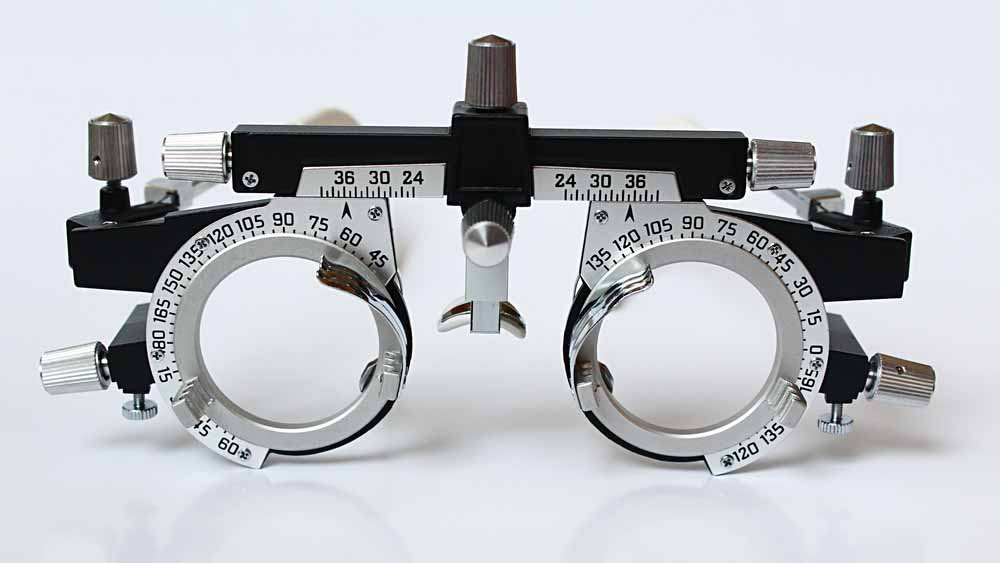Accommodation is a process through which the contraction and/or relaxation of the ciliary muscle and the zonular fibres causes the shape of the lens to change. This helps the lens to focus light rays onto the retina. The phenomenon of accommodation is integral to an individual’s visual experience of the world as this is what enables us to alternate between looking at near and far objects.
Presbyopia is a condition of older individuals (typically people of more than 40 years of age) in which the accommodative reflex of the eye weakens due to a reduction in the elasticity of the crystalline lens. This process is generally considered to be a result of advancing age.
Age of onset of presbyopia may well be predetermined by the presence or absence of other refractive errors affecting the eye.
- In individuals who do not have any preexisting refractive errors (also known as ‘emmetropes’) the typical age of onset of presbyopia is 40 years.
- In ametropes, or individuals who suffer from refractive errors, the age of onset differs depending on the condition in question i.e.,
- In hypermetropes, i.e. farsighted individuals, presbyopia generally develops before 40 years of age.
- In myopic or near-sighted individuals, onset of presbyopia occurs much later than 40 years of age.


Presbyopia Symptoms:
The main complaints of astigmatic individuals include:
- Blurring of vision – difficulty is especially experienced when trying to focus on near objects.
- Squinting of the eyes
- Eye Strain (Asthenopic) symptoms are experienced due to exhaustion of the eye produced by sustenance of the accommodative reflex. These include:
- Headache
- Watering of the eyes
- Tiredness of the eyes
- Photophobia (bright light hurts the eyes)
Evaluation of disease:
To confirm the diagnosis, your doctor may ask you to read alphabets/signs placed at a certain distance. Your eyes may also be examined using different apparatus. An ultrasound test, or a test to chart the curvature of your cornea may also be ordered.
Treatment:
Treatment of presbyopia may be conservative or surgical.
- Conservative (optical) therapy option include the use of:
- Spectacles which have:
- Spectacles which have:
- Monofocal lenses: These spectacles are designed to correct one type of refractive error. Hence, one needs a pair of glasses: one which aids in visualising near objects and another to help see distant ones.
- Bifocal lenses: These spectacles are especially designed to cater to near and far vision together.
- Contact lenses: Monofocal or multifocal lenses may be ordered depending on the preference of the individual using them.
- Spectacles which have:
- Surgical therapies: Your doctor is best equipped to decide whether or not surgery will correct your hyperopia. Surgical correction of astigmatism may be done by performing surgery on the cornea (transparent layer in front of the eye), the sclera (the fibrous layer that surrounds the eyeball) or by replacing the crystalline lens.
- Spectacles which have:
Prevention and Complications:
Several exercises can be practiced every day to train the eye muscles. This helps delay onset of presbyopia. It is also recommended that a patient of presbyopia should start using optical aids as soon as possible because delay in treatment will only cause further worsening of the symptoms. It may also cause the development of asthenopic symptoms (e.g., Headache, watering of the eyes, tiredness of the eyes, photophobia). Proper eye care and follow-up is essential to promote eye health.
References:
Schiefer, U., Kraus, C., Baumbach, P., Ungewiß, J., & Michels, R. (2016). Refractive errors. Deutsches Arzteblatt international, 113(41), 693–702. https://doi.org/10.3238/arztebl.2016.0693
Singh P, Tripathy K. Presbyopia. [Updated 2021 Jul 16]. In: StatPearls [Internet]. Treasure Island (FL): StatPearls Publishing; 2021 Jan-. Available from: https://www.ncbi.nlm.nih.gov/books/NBK560568/
InformedHealth.org [Internet]. Cologne, Germany: Institute for Quality and Efficiency in Health Care (IQWiG); 2006-. Presbyopia: Overview. [Updated 2020 Jun 4]. Available from: https://www.ncbi.nlm.nih.gov/books/NBK423833/
Disclaimer: The information on this blog is intended to educate and inform and is not a substitute for medical advice, diagnosis or treatment. Prior to acting on the information provided on this blog, you should consult your doctor/healthcare professional.
